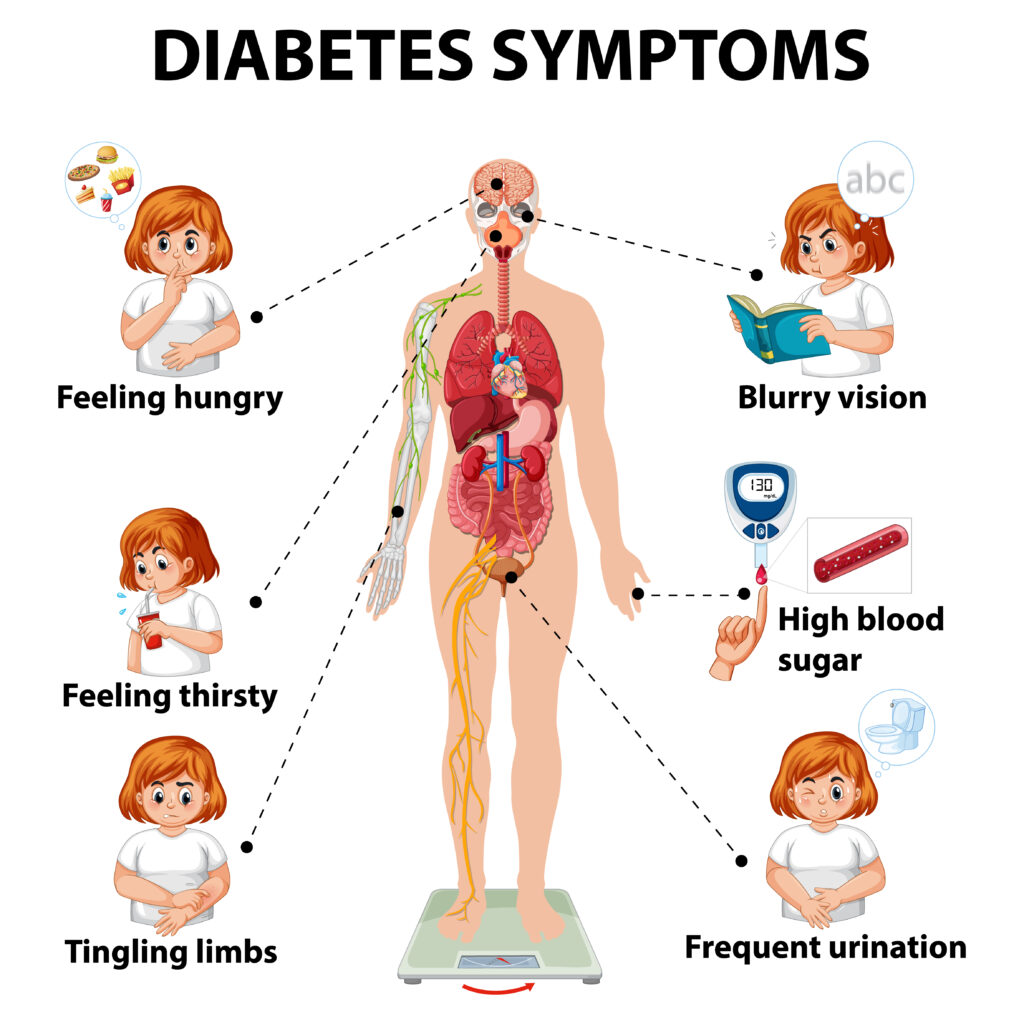Diabetes, a persistent health challenge affecting millions globally, has unique presentations in women. Recognizing the early signs of diabetes in women is paramount to facilitate early detection, ensuring timely treatment and minimizing complications. Throughout this article, we’ll explore six warning signs women might encounter and discuss their implications for overall health.
Unexplained Weight Changes
One of the most perplexing symptoms women might first encounter when dealing with undiagnosed diabetes is a sudden and unexplained change in weight. It’s a paradoxical situation. On one hand, the inability of the body to use glucose properly means that essential energy is being lost. Without glucose serving its primary function as an energy source, the body seeks alternative means. It starts to burn stored fat and muscle to compensate. This metabolic shift can lead to a noticeable weight loss, even when a woman maintains her regular eating habits or perhaps feels hungrier than usual.
On the other end of the spectrum, for those developing type 2 diabetes, weight gain can be the red flag. Insulin resistance forces the body to produce more insulin to manage the excess glucose in the bloodstream. When more glucose enters into the cells, the excess glucose is stored as fat. On the other hand, fat cells promote insulin resistance and speeds up the path towards developing type 2 diabetes.
This is why it is important to observe and report unexplained weight changes to your doctor. We are also happy to support you understand the changes.
Increased Thirst and Frequent Urination
These two symptoms often go hand in hand and serve as classic hallmarks of diabetes. The science behind it is straightforward yet deeply interconnected. Elevated levels of glucose in the bloodstream become a burden on the kidneys, the organs responsible for filtering our blood. To cope, the kidneys begin to expel this excess sugar through urine. However, glucose doesn’t exit the body alone; it pulls water from the body’s tissues along with it.
This increased urination leads to another symptom: an unquenchable thirst. As the body loses more fluid than it takes in, dehydration sets in. This condition signals the brain to prompt the feeling of thirst, pushing an individual to drink more. It becomes a cyclical pattern, where the more one drinks to quench the thirst, the more frequent the trips to the restroom become. The constant fluctuation in fluid levels, if not addressed, can disrupt the body’s balance and lead to further complications.
Persistent Fatigue
A common complaint among women experiencing early signs of diabetes is persistent fatigue or tiredness. This fatigue stems from the body’s inability to use glucose as a fuel source. The resulting energy deprivation, coupled with the body’s efforts to manage increased blood sugar levels, can leave one feeling continually tired. Moreover, frequent trips to the bathroom at night can disrupt sleep, adding to the fatigue.
Blurred Vision
High blood sugar levels can affect the eyes in multiple ways. In the short term, it can cause the lens in the eyes to swell, leading to temporary blurred vision. Over time, if diabetes remains unchecked, it can cause damage to the retina, potentially leading to severe visual complications. Any sudden or gradual changes in vision should be addressed with a healthcare professional to rule out diabetes and other potential concerns.
Slow Healing Wounds
Another telltale sign of diabetes in women is the slow healing of cuts, bruises, and infections. Elevated blood sugar levels can cause poor blood circulation and hinder the body’s natural healing processes. As a result, even minor wounds might take noticeably longer to heal. This symptom is particularly concerning as it increases the risk of infections, which can lead to more severe complications in diabetic individuals.
Tingling or Numbness in Extremities
Neuropathy, or nerve damage, is a long term complication of diabetes. However, early signs can manifest as tingling, numbness, or pain in the hands and feet. High blood sugar levels can damage the small blood vessels that nourish nerves, especially in the extremities. Over time, without proper management, this can result in a loss of sensation in the affected areas, increasing the risk of unnoticed injuries.
Understanding the early warning signs of diabetes is crucial, especially for women, as some symptoms may manifest differently than in men. Recognizing these signs can pave the way for timely medical intervention, improving the chances of managing the disease effectively as these are some of the diabetes solutions that can help a woman maintain a good quality of life.
It’s essential to remember that while these symptoms can indicate diabetes, they can also be associated with other health conditions. Hence, if you or someone you know experiences one or more of these symptoms, it’s vital to seek medical advice. Additionally, you can also refer viedial app to detect these symptoms. Early detection and proactive management can make all the difference in navigating diabetes and its potential complications.




